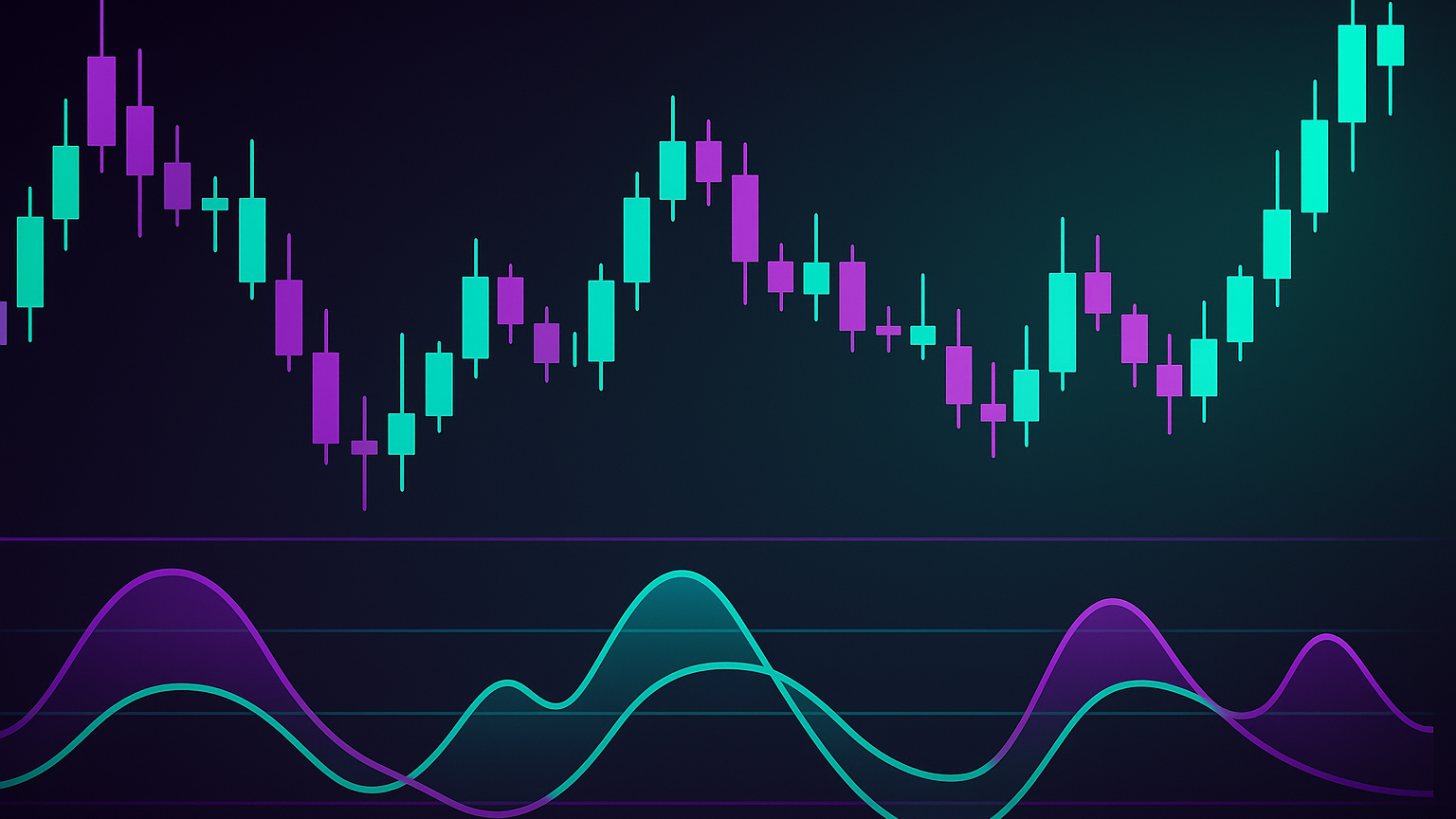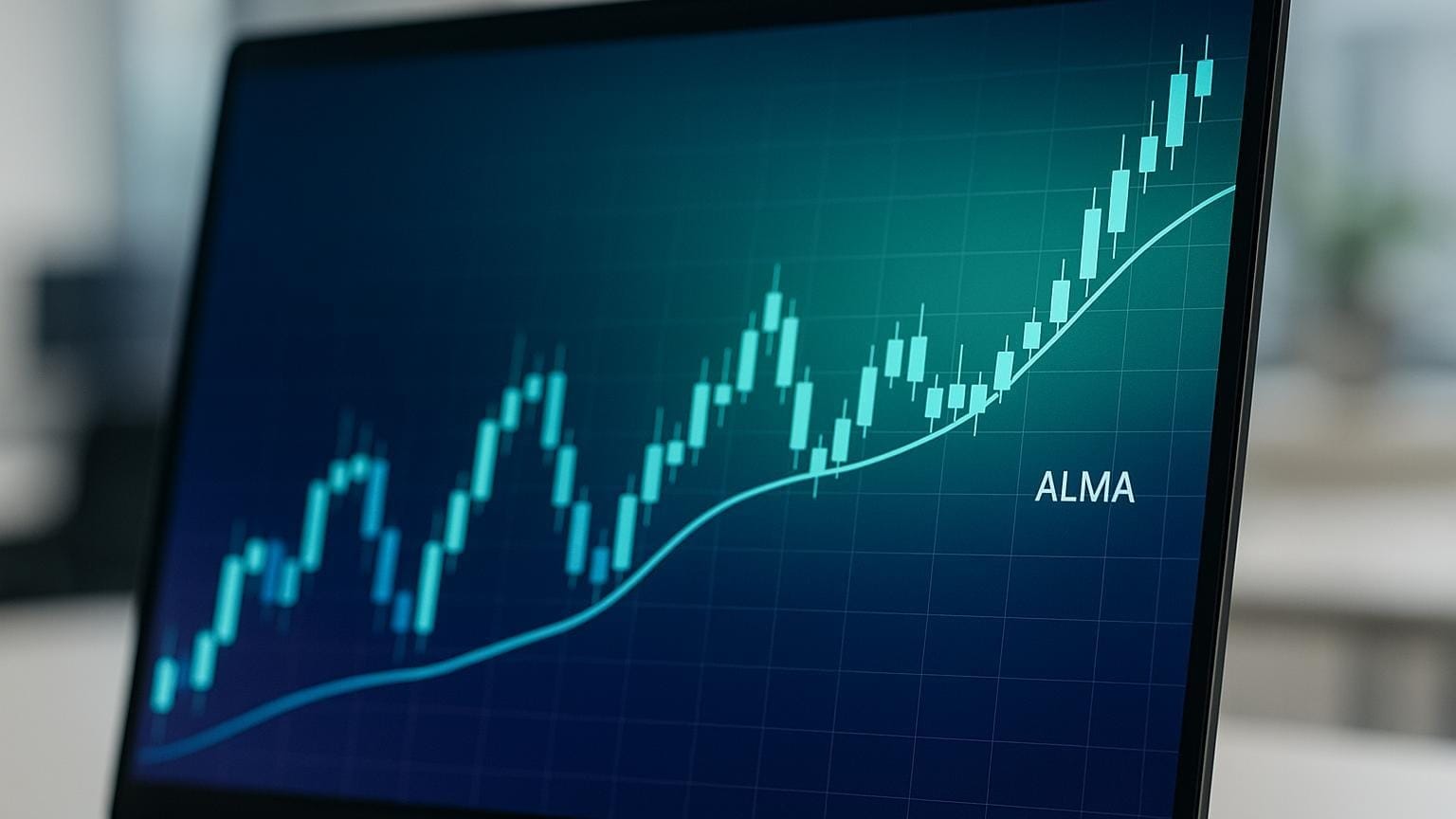Explore how Inside and Outside Bars signal market trends and reversals, enhancing your trading strategy with key techniques and confirmations.
Want to spot market trends and potential reversals easily? Inside and Outside Bars are two Candlestick Structure indicators available in the LuxAlgo Library that traders use to predict market behavior. These formations can help you identify consolidation, volatility, and breakout opportunities.
Key Takeaways:
- Inside Bars: Form when a candlestick’s range is within the previous candle. Signal market consolidation or pause.
- Outside Bars: Form when a candlestick engulfs the previous candle’s range. Indicate volatility or trend changes.
- Best Use: Combine these patterns with the Dynamic Support/Resistance Library indicator, Trend Lines Library indicator, and volume analysis for accurate trading signals.
| Pattern Type | Market Indication | Entry Strategy |
|---|---|---|
| Inside Bars | Consolidation or breakout | Trade breakouts above/below range |
| Outside Bars | Volatility or reversal | Trade in the direction of breakout |
Learn how to identify these patterns, confirm breakouts, and manage risk effectively to improve your trading strategy.
Inside Bar Trading Methods
Inside Bars: Up vs Down Trends
In an uptrend, look for inside bars forming near support levels, especially when paired with bullish candles. These often signal a pause in the market before the trend continues. In a downtrend, focus on inside bars near resistance or trendlines following bearish candles. The smaller the inside bar compared to the mother bar, the stronger the consolidation and the higher the chances of a breakout.
Using these directional cues, traders can develop breakout strategies tailored to these patterns.
Trading Inside Bar Breakouts
| Breakout Type | Entry Strategy | Stop Loss Placement |
|---|---|---|
| Bullish | Buy above the inside bar high | Below the inside bar low |
| Bearish | Sell below the inside bar low | Above the inside bar high |
| Multiple Inside Bars | Wait for the final bar to break | Outside the mother bar range |
Volume analysis is key to confirming the validity of these breakouts.
"As the name implies, an inside bar forms inside of a large candle called a mother bar. It's a pattern that forms after a large move in the market and represents a period of consolidation." – Justin Bennett
Inside Bars in Trending Markets
Inside bars work best when aligned with the current market trend. For example, in a trending market, these setups are more reliable when they follow the overall momentum. Daily charts are particularly useful for filtering out market noise. If multiple inside bars form within one mother bar, this could indicate prolonged consolidation, often leading to a stronger breakout.
To improve your odds, combine inside bar patterns with key technical tools:
- Support/Resistance Levels: Look for setups near well-established price levels.
- Trend Lines Library indicator: Focus on inside bars that align with major trendlines.
- Moving Averages: Use indicators like the 20 EMA to confirm the trend direction.
"In fact, trading with the trend is the only way to trade an inside bar setup." – Justin Bennett
How to Trade Inside & Outside Bar Strategies
Outside Bar Trading Methods
Outside bars build on the concept of inside bars and offer valuable signals for different market conditions.
Outside Bars: Up vs Down Trends
Outside bars are particularly useful in trending markets. A bullish outside bar forms when a candle's high surpasses and its low dips below the previous candle, closing above the prior high.
| Trend Direction | Signal Type | Entry Point | Volume Confirmation |
|---|---|---|---|
| Uptrend | Bullish | Buy above the outside bar's high | Rising volume |
| Downtrend | Bearish | Sell below the outside bar's low | Rising volume |
| Consolidation | Either | Wait for trend confirmation | Volume spike on breakout |
These signals not only align with ongoing trends but can also help spot potential reversals.
Trading Market Reversals
Outside bars are useful for identifying possible market reversals, especially after extended trends. For example, a bearish outside bar following a strong uptrend might suggest the market is losing steam and could reverse.
Here’s how to trade reversals effectively:
- Look for outside bars forming at key support or resistance levels.
- Confirm the reversal with a noticeable spike in volume.
- Place stop-loss orders below the low of the reversal bar in bullish setups, or above its high in bearish setups.
Incorporating these signals can strengthen your trading strategy, just as inside bars do.
Outside Bars in Sideways Markets
When markets move sideways, outside bars can hint at breakout opportunities near the boundaries of a consolidation range. To confirm a breakout, check for:
- A spike in volume.
- A decisive price move beyond the range.
- Additional confirmation from momentum indicators.
Since false breakouts are common in ranging markets, wait for solid confirmation before entering trades. Manage your risk by setting stop-loss levels, such as those based on the Average True Range (ATR).
Technical Analysis Integration
Using inside and outside bar patterns alongside key indicators can create a strong trading approach.
Support and Resistance Analysis
Support and resistance levels help provide context for inside and outside bar patterns. When these patterns appear near critical price levels, they often signal potential trade opportunities. For instance, an inside bar forming near a key support level—especially after a pin bar reversal—has been observed to lead to notable upward price movements, as noted by PriceAction.com.
| Pattern Type | Support/Resistance Context | Trade Implication |
|---|---|---|
| Inside Bar at Support | Potential bullish reversal | Stronger signal when price respects support levels |
| Inside Bar at Resistance | Potential bearish reversal | Signal improves with evidence of prior rejection |
| Outside Bar at Support | Possible support break confirmation | Validity increases with a volume surge |
| Outside Bar at Resistance | Possible resistance test confirmation | Signal strengthens with prior trend confirmation |
Adding Trend Indicators
Trend tools like moving averages (20 and 50-period EMAs) and momentum indicators (RSI, MACD) help confirm both trend direction and breakout strength. For example, if an inside bar breakout occurs above the 20 and 50 EMAs with rising momentum, it becomes a stronger signal.
Volume analysis adds another layer of confirmation to these setups.
Volume Pattern Confirmation
Analyzing volume helps verify breakout signals from inside and outside bar patterns—use the Range Breakout Signals intrabar Library indicator for precise entries. Key points to consider include:
- Rising volume during outside bar breakouts confirms momentum.
- Significant volume increases during breakouts indicate authentic price movements.
- Volume spikes during consolidation breakouts suggest strong market interest.
Risk Control Methods
Stop placement, position sizing, and trade management are essential to safeguard your capital in trading.
Setting Stop Losses
Where you place your stop loss depends on the market's behavior. For bullish inside bar breakouts, stops should go just below the inside bar's low. This gives the trade some breathing room to avoid premature exits. For bearish breakouts, place stops just above the inside bar's high.
Calculating Trade Size
Once stop losses are set, the next step is figuring out your position size. It's recommended to risk only 1–2% of your total capital per trade. Here's how to calculate it:
- Step 1: Find your dollar risk by multiplying your account size by your chosen risk percentage.
- Step 2: Measure the distance (in price) between your entry point and stop loss.
- Step 3: Divide your dollar risk by the price distance to determine your position size.
For example, if you have a $10,000 account and risk 1% ($100) with a stop loss 10 pips away, and each pip is worth $1, your position size would be 1 mini lot (10,000 units).
Managing Trades
With stop losses and position sizes in place, active trade management is the final piece. Here are some key strategies:
- Take partial profits once the trade reaches 2–3× your initial risk.
- Stay alert for reversal signals, which could hint at a weakening trend.
- Adjust your position size based on market volatility, using tools like the Average True Range (ATR).
Conclusion: Putting Patterns into Practice
Main Pattern Concepts
Inside and Outside bars offer crucial insights into market behavior. Inside bars typically signal periods of consolidation, while Outside bars point to increased volatility and directional momentum. These patterns tend to perform better on higher timeframes, especially the daily chart. Inside bars are often used as trend continuation setups, while Outside bars highlight strong market movements. Together, these patterns provide a structured approach to trading.
Implementation Steps
To incorporate these patterns into your trading strategy, follow these steps:
-
Pattern Recognition and Context
Focus on daily charts to identify Inside and Outside bar formations. Pay close attention to key price levels for context. -
Setup Validation
Confirm the setup by looking for:- Increased trading volume
- Alignment with major moving averages
- Clear support or resistance levels
- A strong, prevailing trend
-
Trade Execution Strategy
For Inside bars, wait for a breakout beyond the mother bar's range before entering a trade. When dealing with Outside bars, trade in the direction of the bar's closing, provided it aligns with the overall trend. Inside bars often allow for tighter stop-loss placements, offering better risk-to-reward opportunities.
| Pattern Type | Best Trading Conditions | Key Confirmation Signals |
|---|---|---|
| Inside Bar | Strong trending market | Volume increase on breakout |
| Outside Bar | High volatility periods | Clear closing direction |
| Both Patterns | Daily timeframe | Support/Resistance Alignment Library indicator |








